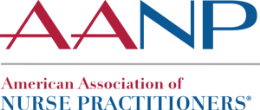Improving Maternal Health Outcomes With Nurse Practitioner Care

Learn how nurse practitioners can make a difference in the reproductive care of women in the U.S.
Back in 2019, the Centers for Disease Control and Prevention (CDC) reported that approximately 700 women die annually from pregnancy-related complications in the U.S. An updated report from last year showed the effects of the global pandemic on maternal health, stating that “In 2021, 1,205 women died of maternal causes in the United States compared with 861 in 2020 and 754 in 2019.” More than 80% of all pregnancy-related deaths are preventable.
Nurse practitioners (NPs) play a critical role in eliminating these preventable deaths and improving women’s health outcomes across the board. In observance of Maternal Health Awareness Day, the American Association of Nurse Practitioners® (AANP) is taking this opportunity to share the latest women’s health resources.
Starting the Conversation
The issues surrounding women’s reproductive health are complex and quite intimidating to tackle. Where do NPs fit into this struggle, and how can those with specialties outside of women’s health lend their support? In an article for The Journal for Nurse Practitioners (JNP), Katherine H. Endres, DNP, FNP-BC, RNC-OB, C-EFM, explains, “NPs may feel unable to make substantial change if not practicing in a women’s health setting. However, new guidelines and tools make supporting preconception, contraception and interpregnancy care a reality in any practice setting.”
NPs are trained to see the whole patient and provide exceptional person-centered care, which makes them ideally suited for inquiring about pregnancy intent. “Asking patients if they plan to be pregnant in the next 12 months initiates discussions about health issues such as cardiovascular health, weight management and emotional well-being,” Dr. Endres explains. “Referrals to specialists such as cardiology or endocrinology can be provided, if appropriate. Many teratogenic medications are prescribed in primary care, and research shows less than 20% of recipients received counseling on medication risk or contraception. Asking about pregnancy intent ensures such medications may be adjusted or discontinued safely prior to conception.”
Hearing Patients’ Concerns During and After Pregnancy
How can providers best serve patients during and after their pregnancy? As told by Dr. Wanda Barfield, director of CDC’s Division of Reproductive Health, “A person knows their body best. Listening and acting upon their concern during or after pregnancy could save a life.” The CDC’s Hear Her® campaign is designed to encourage providers to listen to their pregnant and postpartum patients, and to partake in potentially lifesaving conversations. By asking questions, helping patients understand urgent maternal warning signs and manage chronic conditions that arise during pregnancy, providers can successfully guide their patients through this lifechanging experience.
However, issues stemming from pregnancy do not end after a patient gives birth. As Dr. Endres explains, “Health complications during pregnancy increase the risk of chronic disease later.” Preeclampsia, gestational diabetes and prenatal depression can lead to chronic cardiovascular disease, type 2 diabetes and perinatal mood disorders respectively. Some of these may not manifest until well after the routine post-pregnancy care period and require vigilance and monitoring from providers and patients alike. “NPs outside of maternity units must appreciate the need for post-pregnancy care beyond the 6-week visit and consider pregnancy-related disorders when developing differential diagnoses,” Dr. Endres adds. “Understanding interpregnancy care and interventions to lower risk of future chronic disease or mental health disorders is within the scope of the NP in primary care.”
Continue the Conversation on Reproductive Health
Whether you work in a women’s health setting, primary care or pediatrics, you are not alone in your pursuit of maternal health awareness. Join the AANP Communities in any of these settings — in addition to 28 other specialties and subject areas — to instantly connect with like-minded NP colleagues and share information to enhance NP practice and improve patient care.

